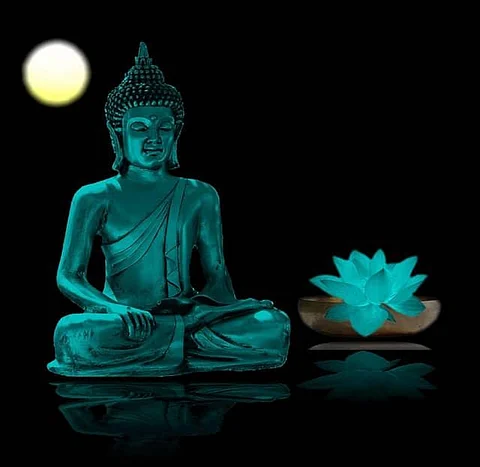
- Home
- NG Hindi
- India
- World
- Politics
- Sex & Relationships
- Entertainment
- Culture
- Lifestyle
- Economy
- Sports
- Sp. Coverage
- Misc.
- NewsGram Exclusive
- Jobs / Internships

By Prachi Mishra
The followers of Buddhism in the United States have gone up by a whopping 170 per cent, according to an American Religious Identity Survey conducted between 1999 and 2000.
Teaching centers and various communities or Sanghs are springing up at such a tremendous rate that Buddhism has now become the fourth largest religion in America.
Officially, Buddhism arrived in the West in the year 1893, during the World Parliament of Religions, along with the early Asian immigrants. There were a total of 12 speakers representing Buddhism at the Parliament, out of which Sri Lankan Buddhist teacher, Anagarika Dharmapala, and Japanese Buddhist leader, Soyen Shaku, were the two speakers who encouraged people to take-up the art of Buddhism.
Many of Shaku's students have done their bit to spread Buddhism in the US by publishing a great deal of Buddhist literature and establishing various Buddhist societies and meditation centers.
The progression of the Buddhists continued in the States with the migration of Asians, who arrived in search of work and a better life. The American troops who returned from Japan after the Second World War also brought a speck of Buddhism to America. Then, the return of the soldiers after the Korean War in the 1950s and the Vietnam War in the 1960s, resulted in an increased awareness of Buddhism in the US. These soldiers were deeply fascinated by the skills of their opponents, especially their training in martial arts.
Soka Gakkai, which came to the United States in the 1960s, is a Japanese missionary movement that expanded the Buddhist religion in the American society. It emphasized on the inner transformation and development of the character of an individual. It focused primarily on chanting and did not teach any other meditative rituals, unlike other sects of Buddhism.
Buddhism did not enjoy the privileged status initially during its inception in the US. When the missionaries and the travelers returned to their country and related their accounts of the encounter with Buddhism in the East to the natives, the religion did not receive a hearty acceptance. It was seen as a negative religion since it rejected the idea of God and emphasized on the total annihilation of the self. It arrived in America at a time when the country was itself going through a religious crisis, which was caused by increasing scientific skepticism. The crisis was also a result of the growing materialism caused by the industrial revolution.
At that time, Buddhism was seen in a new light, as it was considered to bridge the chasm between the scientific and rational thinking, and religion. Today, Buddhism is perceived as "a way of life, a philosophy rather than a religion." It offers an essence of spirituality, peace and harmony in today's chaotic world. It is not bound by any culture, or ethnicity, but is universal, overarching all religious, cultural or ethnic divides. It prioritizes the development of mind, rather than focusing on external way of living. Most importantly unlike what Christianity did to the Orient, Buddhism does not aim at converting the religion of the masses. It, in fact, adds to the existing belief systems and practices of people and does not force anyone to give up their religion.
Other than all of these aforementioned factors, Americans are also fascinated towards Buddhism due to its practice of meditation.
